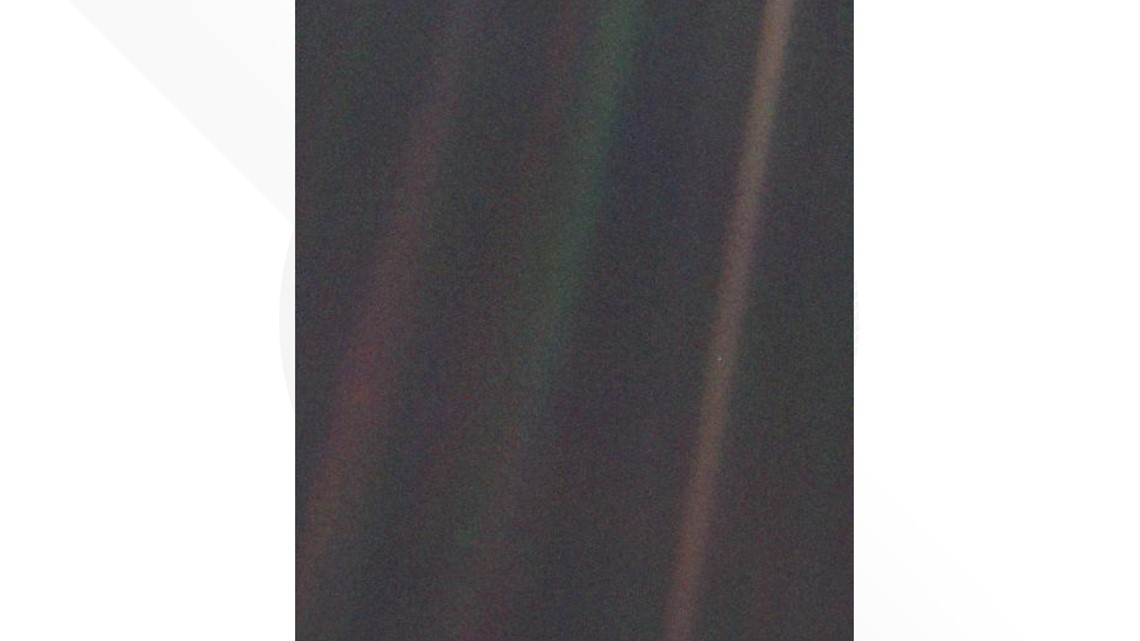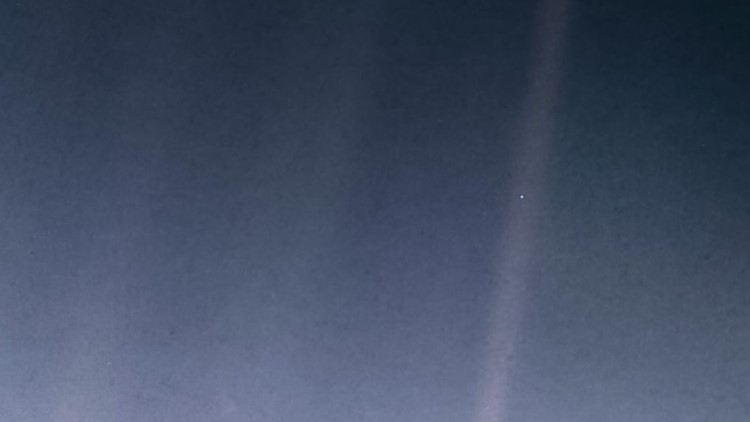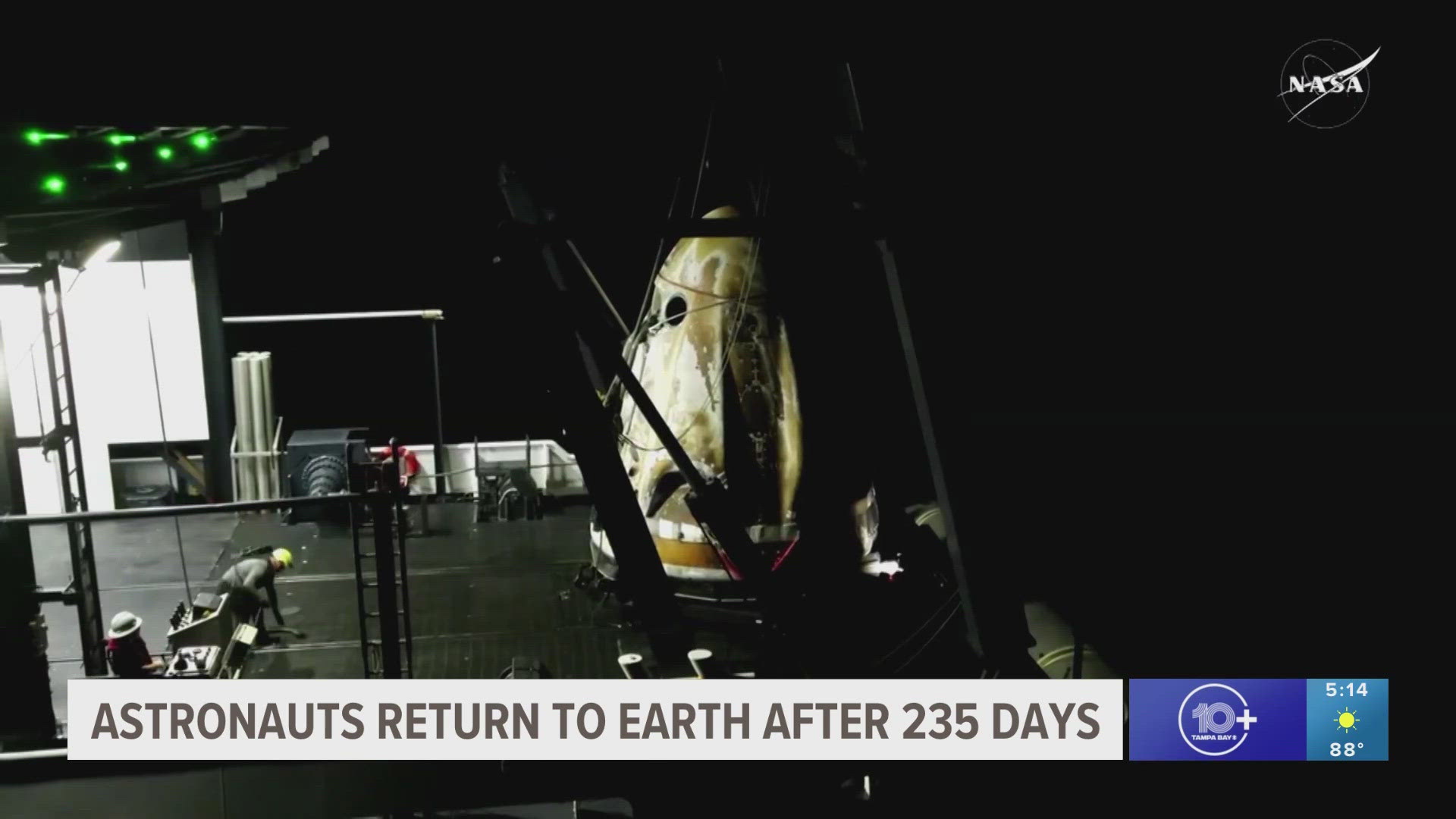See that tiny speck in the vastness of space? Lean in closer.
That's Earth. All 7.53 billion people, trillions of plants and animals, seven continents and five oceans.
All of that encompassed in a refreshed image of the iconic "Pale Blue Dot."
For its 30th anniversary, NASA's Jet Propulsion Laboratory published a new version of the image captured on Feb. 14, 1990, by the Voyager 1 spacecraft. NASA it used update image-processing software while also "respecting the intent of those who planned the image."
The new image is mostly a gradient texture of dark and light gray-blue -- the vastness of space. You can also see rays of sunlight scattered within the view stretching across the scene.
One of those rays intersects with Earth -- a tiny pale speck towards the right. The image shows our planet 3.8 billion miles away.
NASA said Earth occupied less than a single pixel in the image and is not fully resolved.
The "Pale Blue Dot" moniker originated by astronomer and astrophysicist Carl Sagan, who proposed the idea of using Voyager's cameras to capture an image of Earth from so far away.
Sagan wrote a book titled "Pale Blue Dot" after being inspired by the image.
"Look again at that dot. That's here. That's home. That's us," he wrote in the 1994 book. "On it everyone you love, everyone you know, everyone you ever heard of, every human being who ever was, lived out their lives."
Below is the original "Pale Blue Dot" image.


What other people are reading right now:
- No gun found after deputies respond to reports of shots fired at middle school
- Pictures of vehicles released in search for missing South Carolina 6-year-old girl
- Back on land: Florida family once stuck on a cruise ship without passports, a sick child
- One dolphin shot, another stabbed. Wildlife officers are searching for a killer
- Gerber launches national search for its next spokesbaby





